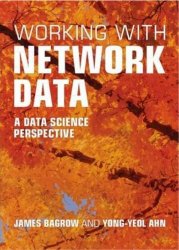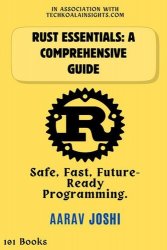 Название: Working with Network dаta: A Data Science Perspective
Название: Working with Network dаta: A Data Science PerspectiveАвтор: James Bagrow, Yong‐Yeol Ahn
Издательство: Cambridge University Press
Год: 2024
Страниц: 554
Язык: английский
Формат: pdf
Размер: 15.1 MB
Drawing examples from real-world networks, this essential book traces the methods behind network analysis and explains how network data is first gathered, then processed and interpreted. The text will equip you with a toolbox of diverse methods and data modelling approaches, allowing you to quickly start making your own calculations on a huge variety of networked systems. This book sets you up to succeed, addressing the questions of what you need to know and what to do with it, when beginning to work with network data. The hands-on approach adopted throughout means that beginners quickly become capable practitioners, guided by a wealth of interesting examples that demonstrate key concepts. Exercises using real-world data extend and deepen your understanding, and develop effective working patterns in network calculations and analysis. Suitable for both graduate students and researchers across a range of disciplines, this novel text provides a fast-track to network data expertise.
There are great textbooks on network science. We complement these with a focus on the practical side of network science—working with network data. The purpose of this book is to provide a more practical guide for data scientists to use network science. For instance, think about the process of defining a network. Although it is usually not emphasized, the process of defining nodes and edges from data is often critical but non-trivial! What about visual, exploratory analyses of networks? While an integral part of network science research—how you visualize networks can make or break your project and determine whether you discover salient patterns—it is often not discussed or taught in enough detail.
- Guides readers through writing code, using statistical and mathematical methods, and applying Machine Learning to collect, process, and analyze data describing complex networks
- Explores social, biological, and information networks through a wide range of real-world examples
- Introduces networks with a Data Science focus, offering a hands-on experience to the topic
We live in the era of Machine Learning. Machine Learning, also called statistical learning, is the science and technology of building predictive models that generalize from data. The advancement of statistical learning and Deep Learning, supported by a deluge of data and computing power, has created enormous progress: now computers can identify objects in a photo more accurately than humans; computers can diagnose some diseases and predict health outcomes as accurately as doctors; computers can draw photo-realistic paintings from simple written prompts; computers can write documents and answer questions in natural language. Machine Learning has not only disrupted many industries, it’s revolutionizing how science is done. Problems that seemed to defy solution, such as protein structure prediction, have been effectively solved by a collaboration between scientists and machines.
Because of its ubiquity, network data are also heavily leveraged by Machine Learning. Thus, scientists working with network data (and all forms of data) can benefit from the tools and techniques of Machine Learning. There are several types of Machine Learning methods: supervised learning and unsupervised learning are the primary categories and then there are self-supervised learning, reinforcement learning, and more. Because the space of Machine Learning is vast and the book’s focus is not Machine Learning, we will focus only on a subset of Machine Learning problems and techniques that are most relevant to network data.
Contents:
Скачать Working with Network dаta: A Data Science Perspective
[related-news] [/related-news]
Комментарии 0
Комментариев пока нет. Стань первым!
















